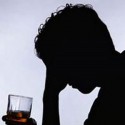Just what is a binge drinker and how to get through to them
Just as governments in Australia and Britain are on the brink of introducing new measures to combat alcohol abuse and binge drinking, new research says that campaigns warning about the harmful effect of excessive alcohol consumption don’t work.
The researchers say they fail to work because they are widely ignored, in particular by young people who consider the number of units recommended to be ‘unrealistically’ low.
The researchers say governments should accept that people enjoy getting drunk from time to time and stop labelling them binge drinkers.
The research from the University of Bath in the UK suggest that a continual and constant emphasis by authorities on the dangers of drunkenness has failed to change people’s behaviour.
They say public health messages instructing people to drink in moderation are widely ignored and attempts to shame heavy drinkers by labelling them ‘binge drinkers’ had also failed.
Dr. Andrew Bengry-Howell, sociologist and an expert in young people’s behaviour who led the research, says the problem is that the definition of a binge drinker as someone who drinks to get drunk could include the majority of people at some time in their lives.
The sociologist calls for different public health messages to be devised which accept the reality that many people enjoy getting drunk from time to time and he likens current health messages regarding alcohol to the ‘just say no’ message about drugs in the 80’s which failed to stop the use of heroin and cocaine.
Dr. Bengry-Howell advocates a more sensible approach which would say instead, ‘we know you are going to drink to get drunk, but just make sure it is not too often’.
He says just lecturing about the number of units, because the guidelines are so low will not help, whereas helping to plan a safe night out or suggesting they drink soft drinks in between alcoholic ones might.
Dr. Bengry-Howell says as a ‘binge’ is 7 units for a woman and 11 for a man, many people are doing it and if the government message categorises everyone as a binge-drinker the message speaks to no one and most people draw on their own experience and just ignore it.
The latest stage of the government’s Know Your Limits campaign which highlights the harm caused by drinking is at the heart of the problem says Bengry-Howell.
He says his research on young people aged 18 to 25 in Britain found that advertising campaigns by drinks manufacturers highlighting the fun nature of alcohol had much more effect on young people than the social warnings.
Dr. Bengry-Howell is presenting his findings this week, at a conference on young people’s health at the Institute of Education in London.
Research from the U.S. is in some respects in line with Bengry-Howell views and has found that contrary to the perception that alcohol-impaired drivers are usually alcoholics, 80 percent of the time they are in fact binge drinkers.
A recent study conducted again among college students has found that binge drinkers, even when legally intoxicated, nonetheless believe they have adequate driving abilities.
Professor Cecile A. Marczinski, a psychologist at Northern Kentucky University says binge drinkers are individuals who, when they drink, typically drink to get drunk and the practice is widespread on college campuses.
A blood alcohol concentration (BAC) of .08g percent is the legal limit for driving and it was found in a study of 40 male and female students, after being given an intoxicating dose of alcohol, both binge and non-binge drinkers were very poor drivers when tested on a driving simulator – however the binge drinkers believed they had a greater ability to drive compared to the non-binge drinkers.
The researchers suggest that binge drinkers are unable to accurately assess their driving abilities after drinking and may not get the “don’t drive when your BAC reaches .08 or more” message.
Marczinski also says that while the dose of alcohol was the legal limit for driving, the binge drinkers had they been stopped by police, would have been prosecuted for impaired driving.
Marczinski said that these findings might help policy and law makers understand why the standard message of “don’t drive when your BAC reaches .08 or more” may be not be as straight forward to follow as one might think.
source: News Medical Net

